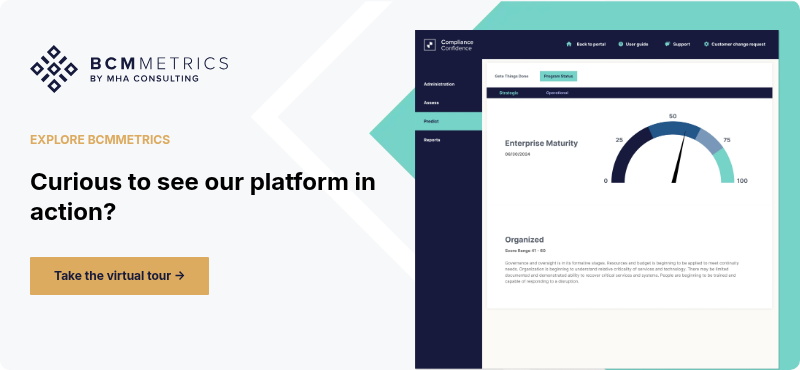Prepare For the Worst with the Best in the Business
Experience capable, consistent, and easy-to-use business continuity management software.
Are you a BCM practitioner in the middle of configuring your BIA questionnaire?
Are you scratching your head over the part about identifying the impact categories that are most relevant to your organization?
If so, you are not alone. This is a famously confusing aspect of the Business Impact Analysis reports. It is also a highly important one.
Impact categories are the aspects of your business that you will be looking at to determine the negative effects of disruptions of varying lengths. There is no universal list of impact categories that works in all industries. Rather, every organization chooses a few such categories based on its unique situation.
Let’s dive in to how to choose your BIA impact categories.
5 Tips to Help You Identify Your BIA Impact Categories
These key tips to do BIA impact categories will ensure that your company can keep going throughout disruptions.
Tip 1: Manage Quantitative and Qualitative Impact
Divide the categories you look at between quantitative (dollar) impacts and qualitative (non-dollar) impacts. This balance provides for a rounded view of the damage that would be caused by disruptions of various lengths.
Tip 2: Limit Your Categories
Limit your total number of categories to six: three quantitative and three qualitative. Having more than six total categories tends to make the BIA interview go on too long and confuse the participants.
Tip 3: Be Consistent
Make sure the categories are consistent across the departments of the company. This consistency allows you to measure apples to apples when gauging the impacts of potential disruptions.
Tip 4: Align With Your Mission
Choose categories that respect the core mission of the business. Your impact categories should be in line with your mission, strategy, and operations.
There are some categories that almost all organizations conducting a BIA will utilize such as: Loss of Revenue, Increased Operating Expenses, and Damage to Brand, Image, and Reputation. However, many categories will be derived from what is uniquely important to each organization or field.
For example, hospitals commonly include Impact on Patient Care and Safety as a qualitative area while universities typically measure the Impact to Student Experience and Safety.
The important thing is to think carefully about the core mission of your organization, then select impact categories that reflect this mission.
Tip 5: Share Your Impact Categories
Share your list with key colleagues. Once you choose the impact categories you think are best, circulate your list to such departments and individuals as Enterprise Risk Management, the CFO, and the COO for their review.
Ideally, you want everyone to align on the business impact categories that are the most relevant for your organization and which best reflect its mission and strategy.
The Three Most Common Mistakes People Make in Identifying Impact Areas
In my experience, the three most common BIA blunders people make in identifying impact areas are:
- Having too many BIA impact categories.
- Mistaking quantitative impact categories for qualitative ones and vice versa
- Choosing the wrong categories for their company type.
Examples from Four Major Industries
The table below shows examples of the impact categories used to conduct BIAs that are commonly chosen by people working in four major industries: finance, healthcare/hospitals, insurance, and real estate. These are good choices for these types of organizations and might provide ideas for people in any industry regarding which impact categories they should utilize.
|
Industry |
Quantitative Impact |
Qualitative Impact |
|
Finance |
|
|
|
Healthcare/Hospitals |
|
|
|
Insurance |
|
|
|
Real Estate |
|
|
At the end of the day, if you select the right categories, then the business units, processes, and applications that are deemed critical by your BIA will be those that support the mission of your organization, day in and day out.
Need help with your BIA?
Our tool BIA On-Demand will help you navigate BIA interviews with ease. You can send a link to the questionnaire to your participants in advance, allowing them to complete pre-work before the interview even begins.
After the fact, you can generate management reports that are easy to understand and even easier to share.

Michael Herrera
Michael Herrera is the Chief Executive Officer (CEO) of MHA. In his role, Michael provides global leadership to the entire set of industry practices and horizontal capabilities within MHA. Under his leadership, MHA has become a leading provider of Business Continuity and Disaster Recovery services to organizations on a global level. He is also the founder of BCMMETRICS, a leading cloud based tool designed to assess business continuity compliance and residual risk. Michael is a well-known and sought after speaker on Business Continuity issues at local and national contingency planner chapter meetings and conferences. Prior to founding MHA, he was a Regional VP for Bank of America, where he was responsible for Business Continuity across the southwest region.
.png)
.png)




